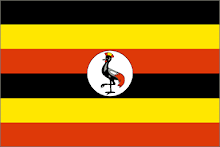

In 1987, the Lord’s Resistance Army (LRA) attacked the Sacred Hearts Girls Boarding School in Gulu, a town in northern Uganda. This attack marked the beginning of the LRA’s two-decades-long campaign of terror in that region.
On Saturday, I traveled with other Pepperdine students to Gulu District, about 175 miles north of Kampala, just south of the Uganda-Sudan border. Our destination was an International Displaced Persons camp not far from Sacred Hearts School.
IDP camps like the one we visited are scattered across the north, scars from the violent movement of the LRA, which has been accused of human rights violations including murder, rape, mutilation, enslavement, and the conscription of children soldiers. At the rebellion’s peak, more than a half-million Ugandans had been displaced by the raids of the LRA and were living in these camps.
Only within the last few years has some semblance of peace returned to the region, and even as we traveled there on Saturday, I read a story in the Daily Monitor about rumors of a shadow rebel group building forces in the secluded thickets of northern Uganda.
Led first by Alice Lakwena and more famously by Joseph Kony, the LRA is a guerilla army whose stated goal is to overthrow the Uganda government and usurp the powers of President Yoweri Museveni. Kony, who proclaims to be a vessel of God, is wanted by the International Criminal Court for his part as leader of the LRA, which is still operating in southern Sudan.
The raids by the LRA on northern Ugandan villages followed a basic pattern. Elders were killed or maimed, the latter taking the form of noses, ears, and lips being cut off by machete. Women and young girls who weren't killed were raped and enslaved as concubines; some traded for arms. Young men and boys were taken captive and indoctrinated, often forced to fight and kill members of their own tribe. Reports also indicate that the children, once inculcated, were employed in the killing of former family and tribe members. Throughout much of its reign, the army was composed predominantly of young children, most of an age that should have them climbing trees, some as young as five.
When Kony and his generals sent these children into battle, they would first paint with nut oil a cross on their chests, telling them it would protect them from bullets. It is estimated that thousands of Ugandan children were killed during battle for the LRA, an organization the US government characterizes as a terrorist group.
The people we encountered at the IDP camp know firsthand of the terror. Although I was ignorant of its significance at the time, on Saturday I met a woman without a nose, presumably a victim of one of the raids.
The woman and man pictured above, mother and son, have been in the camp for years, forced from their homes by the LRA. They, like many others, remain in the camp because the infrastructure there is better than the skeleton of a village that was once their home.
Most of the young children in the camp we visited have spent their entire lives there. This means that they have never flipped a light switch or used a toilet. The bathroom is not a "room" and certainly has no bath. It is a hole in the ground. A distant well is the closest thing they know to running water.
The camps are also supported by non-government organizations, but the NGOs have created a dependency that hasn’t allowed for the development of skills, markets of trade, and self-subsistence that is necessary for the villages of northern Uganda to flourish again.
While thousands have returned to their villages to begin the slow rebuilding process, the camps are a preferable alternative for many. Although the camps were originally to be a temporary haven protected by the Ugandan army from the LRA, because they have lived there for years, the inhabitants of the camps have created homes there. And their idea of peace and freedom lacks the permanence that you or I associate with it.
A man quoted in Saturday’s Monitor articulated a fear that keeps many from returning to the freedom of village life they once knew. “I was abducted and survived death among LRA rebels,” he said. “And now this new group will completely kill my hope to return home.” The man, 46, lives in an IDP camp that was once home to 21,000.
Hearing his story and speaking with the people in the camp we visited, you get a very clear sense of what independence actually means, and how fickle a thing like freedom can be.
This Fourth of July, I did not see any fireworks, I did not go to a barbecue, and I did not listen to any patriotic songs. But once again, I came to appreciate in an entirely new way, just how fortunate I am to call America home.

No comments:
Post a Comment